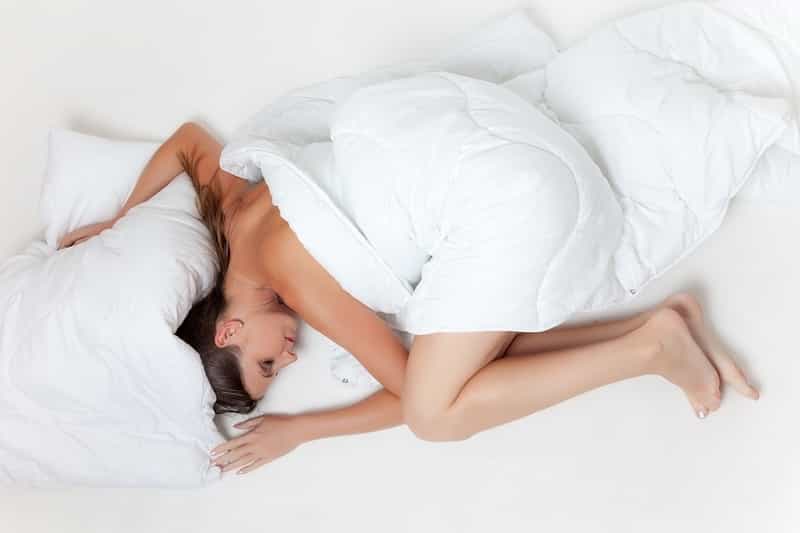There is not a one-size-fits-all approach as far as sleeping positions go. People have different needs and preferences, and as such, you should consider a variety of factors when choosing how best to sleep. Comfort is important, but your health and body type, among other things, are all aspects that go into your ideal sleeping positions. Sleep deprivation can cause more serious health issues later if it persists, so choosing a position that maximizes the quality and length of your sleep is highly important. Read on for a description of most of the common sleeping positions, and how they may affect both the quality of your sleep and your overall health.
Stomach Sleeping
Sleeping flat on your stomach is generally considered to be the least common of the major sleeping positions. Just under a tenth of adults opt for this method of sleeping. This is perhaps unsurprising when you consider the variety of medical issues that can arise as a result of sleeping on your stomach. It is thus not surprising that many long-term stomach sleepers experience some pain as a result of this. These aches and pains can consequently affect the overall quality of your sleep. Sleeping on your stomach most notably puts pressure on your spine by not supporting it. Any stress on the spine can also lead to strain being put on other parts of your body. Damage to both your neck and back is subsequently a common problem for stomach sleepers. Expecting mothers should in particular avoid stomach sleeping, as the extra weight can cause even more strenuous pressure on their spines.
Fortunately, research into the physical issues caused as a result of sleeping on your stomach has led to the development for more suitable mattresses for stomach sleeping. The best mattress for stomach sleepers are generally considered to be harder and more durable than traditional bases. This is because the most strain is put on sleepers’ backs and spines is when they sink into mattresses. You may also think about purchasing a back pillow for further support, if you already suffering from pain while sleeping.
Back Sleeping
Back sleeping has traditionally been linked to worsening problems with snoring and sleep apnea. Sleep apnea refers to a common sleep disorder where individuals frequently stop breathing for short periods of time while asleep, and can often cause poor quality rest overall. People seriously suffering from this condition should consequently avoid sleeping on their back. For most others, however, healthcare professionals recommend back sleeping as the safest from a medical perspective. This allows for the most natural resting position for your spine. As such, it is considered the healthiest position for preventing aches and pains. In particular, individuals with back pain should consider transitioning to this sleep position if you do not use it already. Sleeping flat on your back has also been linked to improved night-time digestion, and is thus known for reducing issues like heartburn.
Side Sleeping
Traditionally, healthcare professionals have advocated for sleeping in your back as the healthiest choice. However, recent research suggests side sleeping offers almost as many health benefits as back sleeping, with few drawbacks.
Lying on either your right or left is by far the most common sleeping position, with nearly two-thirds of all adults sleeping this way. Similar to back sleeping, lying on your side with the correct body alignment can reduce joint and lower back pain, and is also linked to benefits relating to digestion and other gastrointestinal problems. However, unlike sleeping on your back, it is also beneficial for snorers, or those with sleep apnea. This is vital, since ongoing sleep apnea can increase your risks of heart disease and diabetes, as well as other medical conditions.
Yet sleeping on your left or right side is not without its drawbacks. Most notably, it can cause long-term damage to your shoulders if you do not align your body posture correctly. Keeping your arms and hands lower on your body, and raising your knees, can help support your body and reduce the strain on your back. As with stomach sleepers, firmer mattresses are also more desirable for side sleepers as they ensure your shoulders are properly supported.
Fetal Position Sleeping
The benefits and drawbacks of sleeping in the fetal position are more or less the same as sleeping on your side. As such, it is more often considered a variation of this position than a completely separate one. Overarching your back while sleeping in this position can cause your back to rest in an unnatural position, causing unnecessary aches and pains. This is therefore something worth considering if you commonly sleep in this position.


